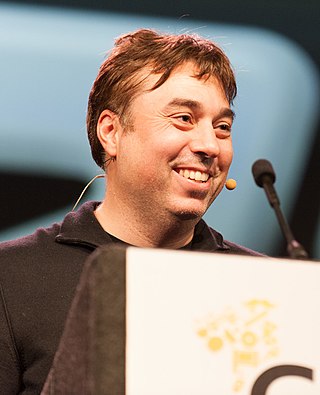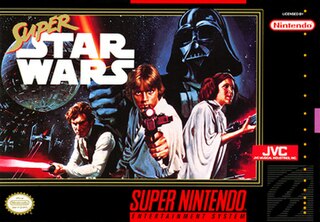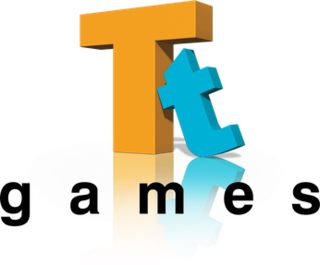Related Research Articles

MicroProse is an American video game publisher and developer founded by Bill Stealey, Sid Meier, and Andy Hollis in 1982. It developed and published numerous games, including starting the Civilization and X-COM series. Most of their internally developed titles were vehicle simulation and strategy games.

Origin Systems, Inc. was an American video game developer based in Austin, Texas. It was founded on March 3, 1983, by Richard Garriott and his brother Robert. Origin is best known for their groundbreaking work in multiple genres of video games, such as the Ultima and Wing Commander series. The company was purchased by Electronic Arts in 1992.

Chris Roberts is a British-American video game designer, programmer, film producer and film director. He created the Wing Commander series while at Origin Systems and has been working on the crowdfunded space simulator Star Citizen since 2010.

Star Wars is a first-person rail shooter designed by Mike Hally and released as an arcade video game in 1983 by Atari, Inc. It uses 3D color vector graphics to simulate the assault on the Death Star from the 1977 film Star Wars. There are three connected gameplay sequences: combat against TIE fighters in space, flying across the surface of the Death Star, and the final trench run. The sequence repeats with added complications and the Death Star regenerating for each. The player's X-Wing fighter has a shield which only protects against damage a certain number of times, then the next hit ends the game. Speech synthesis emulates actors from the film.

Krome Studios Melbourne, originally Beam Software, was an Australian video game development studio founded in 1980 by Alfred Milgrom and Naomi Besen and based in Melbourne, Australia. Initially formed to produce books and software to be published by Melbourne House, a company they had established in London in 1977, the studio operated independently from 1987 until 1999, when it was acquired by Infogrames, who changed the name to Infogrames Melbourne House Pty Ltd.. In 2006 the studio was sold to Krome Studios.

Super Star Wars is a 1992 action video game developed by LucasArts and Sculptured Software for the Super Nintendo Entertainment System. It is based on the 1977 film Star Wars. It was released by JVC Musical Industries in Japan and North America in 1992 and Europe in 1993. The game was followed by two sequels based on the subsequent Star Wars films, Super Star Wars: The Empire Strikes Back (1993) and Super Star Wars: Return of the Jedi (1994). The game was re-released in November 1996 as part of Nintendo's Player's Choice series. It was released on the Wii’s Virtual Console by LucasArts in 2009.
Realtime Games Software Ltd. was a British computer game developer, founded in 1984 by three Leeds University students Ian Oliver, Andrew Onions, and Graeme Baird.
Vector graphics are a form of computer graphics.

Tose Co., Ltd. is a Japanese video game development company based in Kyoto. It is mostly known for developing Nintendo's Game & Watch Gallery series, various Dragon Ball games, as well as other Nintendo products. Tose has developed or co-developed over 1,000 games since the company's inception in 1979, but is virtually never credited in the games themselves. Tose maintains a policy of having no creative input into the work they do, going so far as to refuse to put their names in the credits for most of the games they work on. As such, Tose has gained a reputation for being a "ghost developer".

The Addams Family is a platform game based on the 1991 film of the same name and developed and published by Ocean Software. It was released for home consoles such as the Super Nintendo Entertainment System, computers such as the Amiga, and handheld consoles like the Game Boy.

Shuttle is a space flight simulator game developed by Vektor Grafix and published by Virgin Games. It was released in 1992 on the IBM PC, Amiga and Atari ST.
Ciaran Eugene Gultnieks is a British computer game programmer, whose projects include Star Wars, Dogfight (1993), Slipstream 5000 (1995) and Hardwar (1998) for the PC. He is the founder of F-Droid and contributes to the microblogging platform GNU social.

Dogfight: 80 Years of Aerial Warfare is a combat flight simulator video game developed by Vektor Grafix and published by MicroProse in 1993 for the PC DOS, Atari ST and Amiga. In North America, the game was released with the title Air Duel: 80 Years of Dogfighting.
Dominic Robinson is a computer game programmer. He came to prominence as an in-house programmer for Hewson Consultants when he converted Uridium to the Spectrum in 1986. This was followed by another classic Spectrum shoot-em up, Zynaps, and a puzzle/shooter, Anarchy, both of which were released in 1987. After leaving Hewson, he joined Graftgold to work on the Spectrum conversion of Flying Shark, as well as the Amiga and Atari ST versions of Simulcra and Rainbow Islands.
Andrew Mark Jones is a former Wales international footballer. A striker, he won six caps at international level and scored one goal. In domestic football, he made 336 league and cup appearances in the English Football League and scored 116 goals.
Vektor may refer to:

Fighter Bomber is a combat flight simulator developed by Vektor Grafix and released in 1989 by Activision UK for several platforms.
The Code Monkeys Limited was a British video game developer based in Dewsbury, England, and founded in February 1988 by Colin Hogg, Mark Kirkby and Elliot Gay. It was known for porting video games to various platforms. In February 2011, shareholders of the company decided to wind down the company, which was effective two weeks later.

TT Games Limited is a British holding company and a subsidiary of Warner Bros. Games. The company was established in 2005 through the merger of developer Traveller's Tales and publisher Giant Interactive. Its other branches include developer TT Fusion, animation studio TT Animation and mobile game studio TT Odyssey. The company is best known for its video games based on the Lego construction toy.
References
- ↑ "MICROPROSE BUYS VEKTOR GRAFIX FOR MORE THAN FUN AND GAMES". The Washington Post. 13 July 1992 – via www.washingtonpost.com.